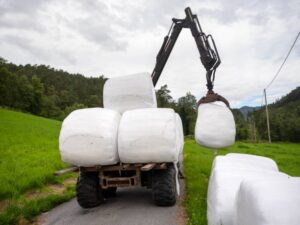Baler twine is a type of binding used to secure round bales of hay or straw together. Constructed of sisal or synthetic material, baler twine comes in various colours and strengths; additionally it’s UV radiation-resistant for added peace of mind.
Choose the proper binding for your hay to maximise its efficiency and quality during baling, according to University of Wisconsin research. Net wrap and synthetic baling twine both work effectively; your decision should depend on factors like forage needs, baling equipment available and storage plans.
Strength
Baling twine can help maximise your hay or straw harvest with proper use, providing the greatest return for your hard work and investment. A necessary tool for any farmer, it comes in various weights to suit different farming situations. In addition, its tight coils ensure quality storage; less bales will rot during transport or be lost altogether! Using baling twine properly will be cost-saving over time as less bales rot away or become lost during transit – saving both time and money along the way!
 Baling twine is an economical, long-term rope that can withstand significant pressure. It’s resistant to rot, abrasions and moisture – perfect for agricultural applications! Additionally, UV rays don’t break it down quickly either – which extends its useful lifespan significantly, making balancing twine a cost-effective, long-lasting choice that rivals synthetic twine in terms of longevity.
Baling twine is an economical, long-term rope that can withstand significant pressure. It’s resistant to rot, abrasions and moisture – perfect for agricultural applications! Additionally, UV rays don’t break it down quickly either – which extends its useful lifespan significantly, making balancing twine a cost-effective, long-lasting choice that rivals synthetic twine in terms of longevity.
Choose the appropriate twine for your baling needs by considering both your type of baler and its tensile strength, and its number of twists per meter; more twists per meter means stronger twine that may break less frequently.
Old twine is often dumped into landfills or accumulates on landowner’s properties where it can clog machinery or cause digestive problems in livestock and cattle, even leading to their deaths. Biodegradable twine made from natural fibres such as jute or sisal can decompose in one to two years, decreasing environmental harm caused by synthetic twine.
Durability
Durability is one of the key components to consider when it comes to picking out synthetic baling twine for baling hay bales and holding knots securely. Sisal twine was once considered the only viable choice; now however there are synthetic options with equally strong knot strength and biodegradability benefits that offer reduced environmental impacts.
Polypropylene twine is one of the most widely used synthetic twine options, making it perfect for use when tying bales of hay as it’s durable and rot resistant. Furthermore, its nondegrading nature means it won’t degrade over time like natural twine would, but this may present trip hazards if left lying around unattended.
Alternative natural twine materials to synthetic baling twine include jute or hemp twines made from plant fibres and biodegradable. As they’re biodegradable and less flammable than their synthetic counterparts, jute and hemp twine can also provide several environmental advantages compared to poly twine; less flammability; greater recyclable post use benefits; suitable for smaller bales but harder to work with due to stiffness/elasticity issues and weaker strength than poly twine; also they may entangle or create trip hazards!
Recyclability
Twine is an integral component of baling operations yet can be detrimental to livestock in its native environment if left lying around. If left alone it can entangle and even cause digestive problems for livestock. Therefore, it is imperative to recycle balers twine whenever possible to save both money and time as well as lower the likelihood of consumption by your animals. Some companies even pay you to send back used twine to them! You could get extra cash while helping Mother Earth at once!
Farmers often face difficulty managing the waste from their baling operations, with synthetic baling twine often being burned or buried on farms to dispose of it causing environmental pollution. Now there are options for recycling this waste to help both Ospreys and farmers.
Recycled baling twine can serve many different purposes. It can be woven into baskets or doormats for example. Furthermore, garden stakes or mulch made out of this twine may also be created from it and is available in multiple colours to make identification easy.
Recycled twine is typically composed of polypropylene, an extremely durable material. This type of twine features high knot strength and can be used with all kinds of baling machines; plus it resists UV radiation.
Cost
Baling twine is often used to secure bales of hay or other fibrous materials together, making them more stable and easier to stack. Additionally, tying bales together also keeps the hay dry and protects livestock against parasites; but it must be removed prior to storage as otherwise it can entangle machinery, trip hazards and pose fire risks when stored indoors such as barns. Furthermore, as it’s often nonbiodegradable it also contributes to environmental pollution as well as harm wildlife populations.
Baling twine is available in various forms, from natural fibres such as sisal and hemp to synthetic polypropylene – with the latter often preferred by farmers due to its durability, resistance to weathering and UV radiation exposure, biodegradability and range of colours to fit different balers, crops and baling conditions.